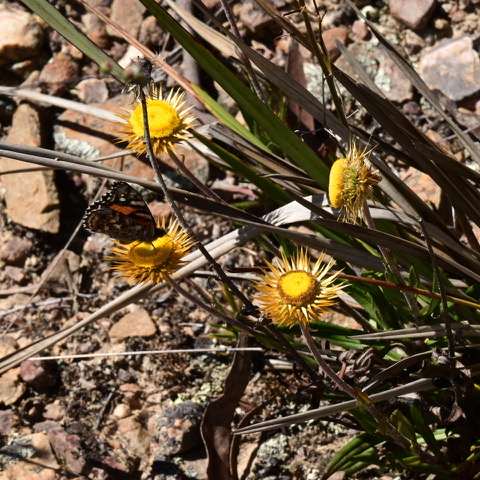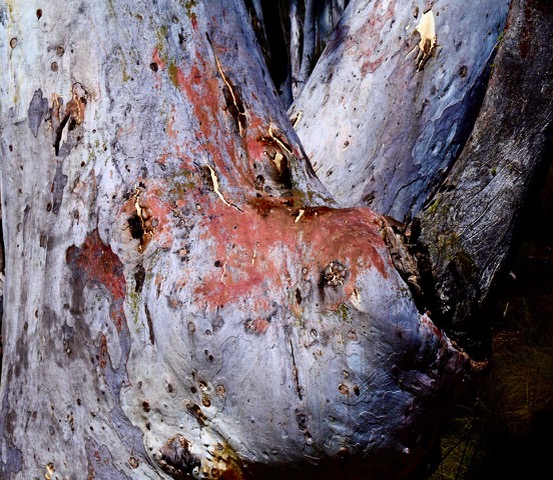It had been dry with the Southern Tablelands having endured several above 30 degree days in October but we were here in November looking for pretty flowers. My expectations were not great, nevertheless it was an opportunity to get out into the bush to experience nature as it is, not as we may sometimes wish it to be. I have learnt that it is a mistake to anticipate a floral wonderland in an area holding an impressive list of both small and large plants that at their best would delight, but at other times appear as a scrubby mass of twigs and spikey leaves that make bare legs bleed. This was the experience of a group of Australian Plants Society members at a recent Annual Weekend Get-Together led by Ash Mahoney, the Crown Land Manager of Alison Hone Reserve.
Ten kilometres north-west of Goulburn on the Crookwell Road the Alison Hone Reserve is remnant bushland, technically an open Dry Sclerophyll Woodland. It was a Travelling Stock Reserve until 1981 when it was gazetted as a Reserve for Public Recreation and the Preservation of Native Flora and Fauna after the discovery of a rare orchid. At approximately 700 metres above sea level the reserve is on a low north-north-east running ridge that to its north includes Back Arm Nature Reserve and Narrangarril Nature Reserve and just to its south Mount Baw Baw at 860 metres. From Goulburn’s Rocky Hill War Memorial Tower the nameless ridge appears in the distant western horizon as a thin slither of dark green against an otherwise featureless plain. There is a windfarm on its northern end where the Middle Arm Road cuts through the ridge.
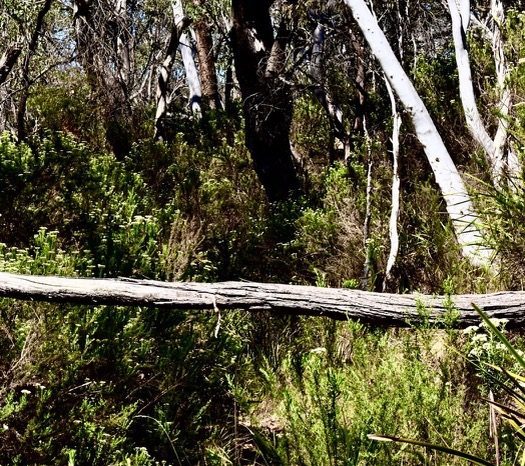
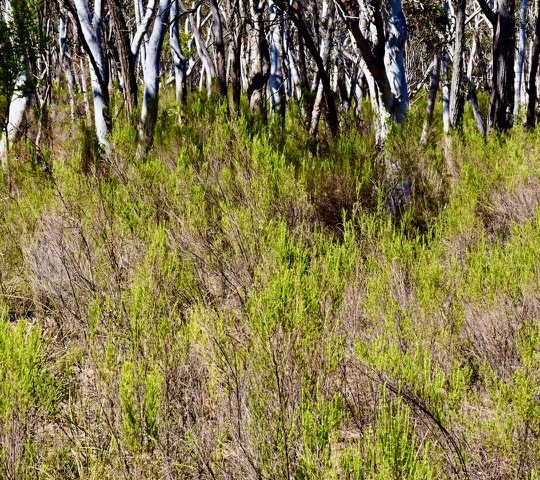
Surrounded by pastures the relatively untouched scrub land growing on shallow, rocky and somewhat infertile soils was popular with birdwatchers belonging to the Goulburn Field Naturalists Society who cleaned the area of rubbish and started recording the 183 plant species thus far listed. As this includes 36 weeds there is work aplenty for the bush regenerator. In 1978 an ornithologist, Tom Hone and his wife Alison Hone found an endangered orchid, Calochilus imberbis more commonly accepted to be a form of Calochilus robertsonii. Such are the disputes among botanists as to the naming of ground orchids so maybe we should call it a purplish bearded orchid or the beardless bearded orchid. The argument persists.
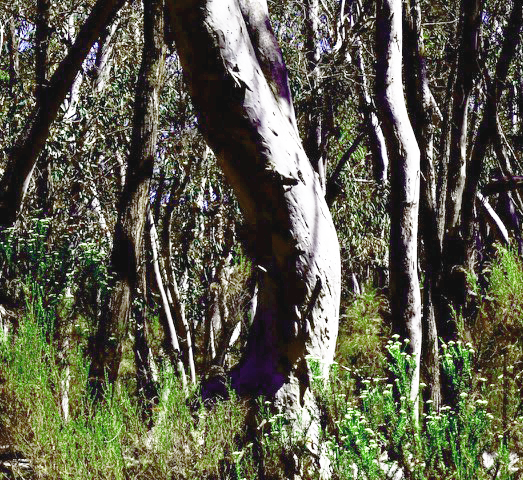
In November not much was in flower except for an abundance of Ozothamnus diosmifolius (white dogwood) throughout the bush and a patch of Leucochrysum albicans (Hoary Sunray daisy) growing on a denuded ironstone wasteland near the car park. A few yellow petals of the Goodenia hederacea poked through taller plants where the area had been cleared for power lines. I also saw one feeble Patersonia sericea as well as a pink Stylidium graminifolium poking out from somewhere.
Eucalyptus mannifera (Brittle Gum) with Ozothamnus diosmifolius at bottom right.
In this harsh environment common heath plants are not as luxuriant as in the wetter coastal climate although after crossing a deep dry creek bed we did see a Dillwynia phylicoides exhibiting its bright yellow pea flowers. The tiny straggly blue petals of Wahlenbergia stricta were common and unsurprisingly this plant is a successful flower in local gardens. Alas, unlike many an August walk we did not see any ground orchids such as the Diuris sulphurea, Calochilus platychilus or Stegostyla moschata, indeed the beardless bearded orchid had not been seen in the reserve for many years.
